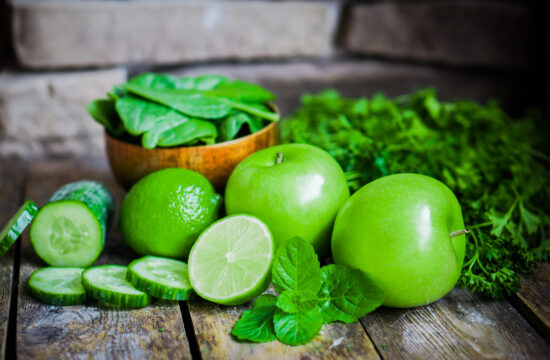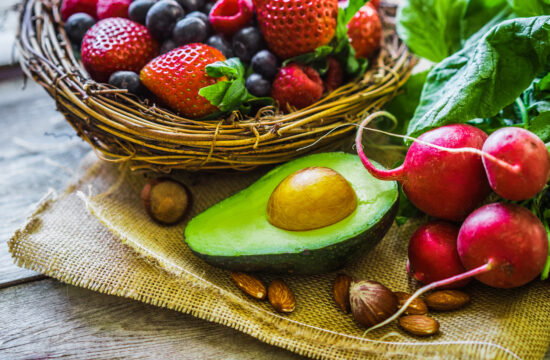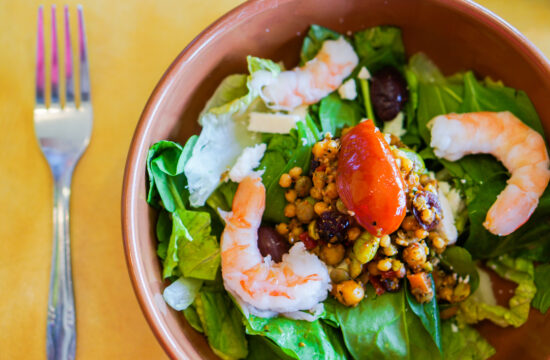Understanding Portion Sizes
What are Portion Sizes?
Alright, let’s kick things off with understanding what portion sizes really mean. Simply put, a portion size refers to the amount of food you choose to eat for a meal or snack. It’s often different from serving sizes, which are the recommended amounts suggested on food labels.
Getting a grip on portion sizes is super important because it plays a huge role in how many calories you consume per day. For example, think about that massive bowl of pasta you love. If you’re eyeing a serving size, it’s likely much smaller than what you’re used to dishing out.
Need a Strong Nutrition Boost for Your Diet? Take a Look...
To really make changes, you’ve gotta embrace the mindset that your plate doesn’t need to be overflowing for you to feel satisfied. That’s the first step towards a healthier relationship with food. Yes, it’s totally possible to enjoy your meals without going overboard!
Portion Distortion
Have you ever noticed how the size of restaurant portions has exploded over the years? It’s wild! What used to be considered a “normal” serving is now often just a small meal for most. This phenomenon is known as portion distortion.
The fact is, our brains can get confused with oversized portions, leading us to believe we need more than we actually do. It’s time to break free from that and recognize what a true portion looks like. Consider bringing out measuring cups or using a food scale to start retraining your eye.
Think about it—smaller plates and bowls can make your portions look bigger while also helping you feel just as full. It’s a little trick I’ve used to keep my portion sizes in check, and it works wonders!
Need a Strong Nutrition Boost for Your Diet? Take a Look...
Reading Labels
One of my favorite tips is to get cozy with food labels. Familiarizing myself with serving sizes listed on products has been a game-changer. When I see that a snack says a serving is just 1 ounce, it makes me think twice about grabbing the whole bag!
Food labels not only tell us about serving sizes but also help us understand how many calories we’re consuming with our meals. By keeping an eye on this, I started becoming more mindful of what I’m eating.
Plus, once you know what a true serving size looks like for your favorite foods, it becomes a lot easier to manage portions at home and when dining out.
Using Smaller Plates and Bowls
Visual Impact
I first discovered this little gem when I noticed that my meals looked more satisfying on smaller plates. The idea is simple: smaller dishes can make portion sizes feel much larger and can trick your brain into thinking you’re eating more than you are. Voila, instant satisfaction!
When I switched to smaller plates, I was amazed at how my perception of portion sizes changed. Instead of feeling deprived, I felt satisfied with less food. It turns out, it’s all about the visual aspect!
So next time you’re about to set the table, think twice before reaching for those giant platters. Choose smaller, cute dishes instead; it’s an easy way to keep portions in check while still enjoying all the goodness!
Plate Method
Adopting the plate method is another cool trick I’ve come to appreciate. This is where you divide your plate into sections: half for veggies, a quarter for proteins, and a quarter for carbs. It’s a fantastic way to make sure you’re getting a balanced meal without overeating.
Not only does this method encourage healthy eating, but it also helps you visually gauge the right amount without needing a scale or measuring cups. This has been a lifesaver on busy nights when I wanna whip up something quick!
By mastering the plate method, you’ll be able to fill up your plate while still controlling your portions. You get to enjoy variety and balance in your meals, making your dining experience both delicious and healthy.
Mindful Eating
Mindful eating is something I’ve really embraced on my journey. This means truly being present while you eat — savoring each bite, noticing flavors and textures, and being aware of your body’s hunger cues. When I really pay attention, it’s easier to listen to my body signaling when it’s full.
Honestly, it’s about taking the time to enjoy your food instead of rushing through meals. Just by slowing down, I’ve found myself appreciating smaller portions more because I actually taste and relish the food on my plate.
To practice mindful eating, try to turn off distractions like TV or phone. Engage with your food, and I promise you’ll find it easier to manage those pesky portion sizes!
Pre-portioning Snacks
Preparation is Key
One of the best habits I’ve developed is pre-portioning my snacks. I know, it sounds a bit strict, but hear me out! Having snacks ready to grab can prevent me from mindlessly munching straight from the bag—hello, guilty pleasure!
When I pour out a single serving into a small bowl or bag, I automatically feel more in control. Plus, it helps avoid the temptation to eat more than I actually need. It’s all about pacing yourself for those times when munchies hit!
Good HealthY DIETING Solution is Easier Than Most People Think!
Take a Look for Yourself!
I also take the time to create a variety of options so I can keep things interesting. Pre-portioned snacks equal less work and more enjoyment — it’s a win-win if you ask me.
Choosing Healthy Options
While I’m all for treats, I’ve learned the hard way that stocking up on healthier snacks can make managing portions easier and more satisfying. Think fruits, veggies, nuts, and whole grains. These options will fill you up and keep you feeling great!
When I reach for snacks that are nutrient-dense, it aligns perfectly with my portion control efforts. You get a lot more satisfaction with healthier choices, which means less likelihood of overindulging.
Next time you’re heading to the grocery store, consider loading up on wholesome snacks that keep you energized, so you’ll feel great while still managing portion sizes.
Keeping Snacks Visible
Funny enough, where you put your snacks can actually influence how much you eat! I’ve learned that keeping healthy snacks visible and accessible can make all the difference in how often I reach for them.
By placing them at eye level in the fridge or keeping a bowl of fruit on the kitchen counter, I’m far more likely to grab these healthier choices instead of something less wholesome. It’s just easier to maintain portion sizes when those snacks look right at you!
So, give it a shot: keep healthy options within reach and see how your snack game improves.
Listening to Your Body
Hunger Cues
As I’ve gotten older, I’ve learned the power of listening to my body’s hunger cues. It’s a skill that definitely takes time to develop. But hey, pay attention! There’s such a difference between true hunger and just eating for the sake of eating.
When I start feeling hungry, I check in with myself and ask if my body truly needs food or if it’s just craving comfort. Learning to differentiate between the two has helped me manage portion sizes so much better!
Practice tuning in to what your body is telling you, and you’ll become way more in tune with your true hunger signals. It’s kind of like turning your relationship with food into a more personal one.
Fullness Indicators
In addition to hunger cues, recognizing signs of fullness has been another eye-opener for me. It’s easy to ignore these signals, especially when we’re distracted. I’ve practiced pausing during meals to recognize when I might be nearing that satisfied state.
Take a moment to rest your fork down for a sec and check in. Ask yourself: Am I still enjoying this? Am I approaching full? It’s a great way to prevent overeating and helps me enjoy meals more mindfully!
Trust your body; it usually knows best. By being aware of your fullness, you can fine-tune your portion sizes effortlessly.
Food Journaling
Finally, one method that has genuinely helped me is keeping a food journal. Writing down what I eat helps spotlight my eating habits and behaviors around portion sizes—something I never really paid attention to before!
It can be as simple as noting down what I eat and how I feel afterward. This practice made me more aware of times I might be eating out of boredom or stress rather than true hunger.
And, it’s been such an eye-opener to see patterns in my eating. If you’ve never tried food journaling, give it a shot! It’s a very uncomplicated but effective way to boost your portion control game.
FAQ about Managing Portion Sizes
1. How can I tell what a healthy portion size is?
A healthy portion size can vary depending on the food type, but generally, it’s about the size of your fist for carbs, half your plate for veggies, and a quarter for protein. It can also help to read food labels for specific serving sizes.
2. Does using smaller plates really help with portion control?
Absolutely! Using smaller plates can trick your brain into thinking you’re eating more. It’s one of the easiest tricks you can utilize to help manage portion sizes without feeling deprived.
3. What are some healthy snack options to pre-portion?
Great question! Some healthy snack options include baby carrots with hummus, fruit slices, whole-grain crackers with cheese, nuts, or yogurt. These all make for wonderful, nutritious snacks when portioned out correctly!
4. How can I practice mindful eating?
To practice mindful eating, try to remove distractions while eating. Focus on your food’s flavors and textures, chew slowly, and listen to your body for hunger and fullness cues. This can significantly enhance your portion control.
5. Can food journaling really help improve portion control?
Yes! Food journaling increases awareness of your eating habits and helps you understand how much you’re consuming. It highlights patterns and helps pinpoint when you might overindulge, making it a powerful tool for better portion control.












